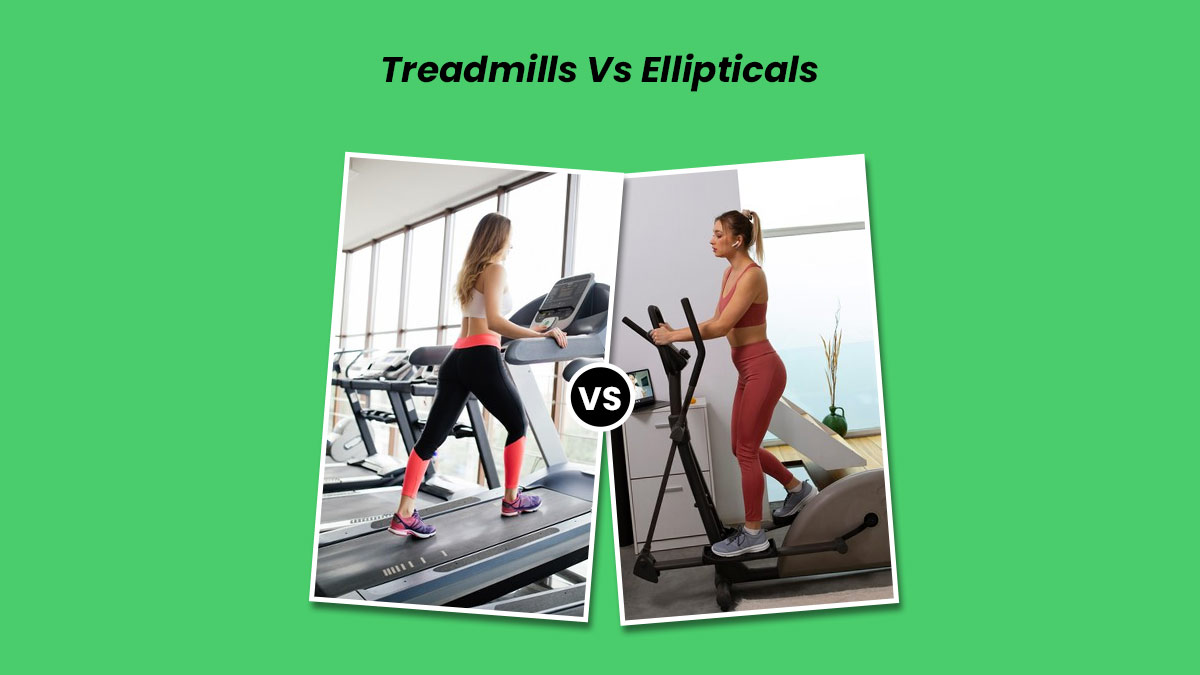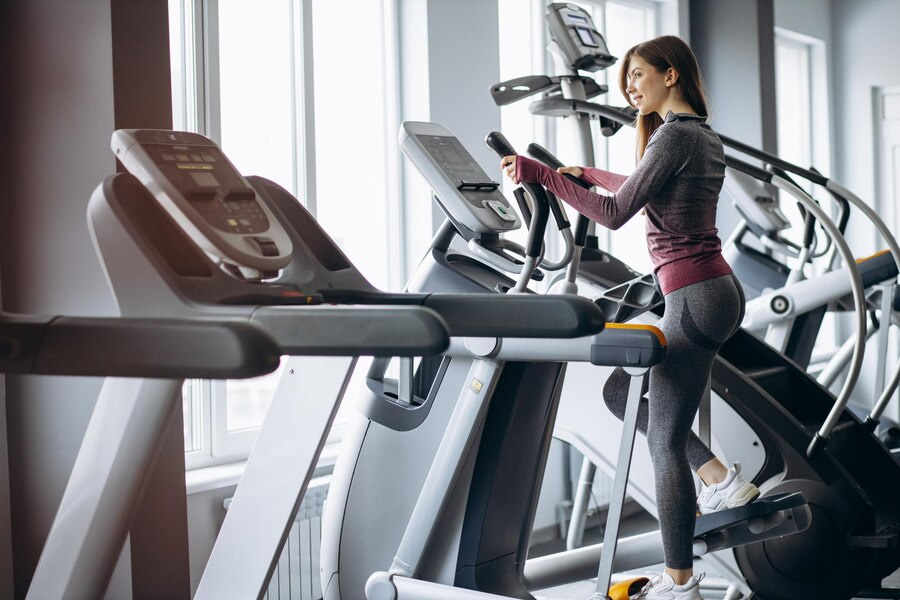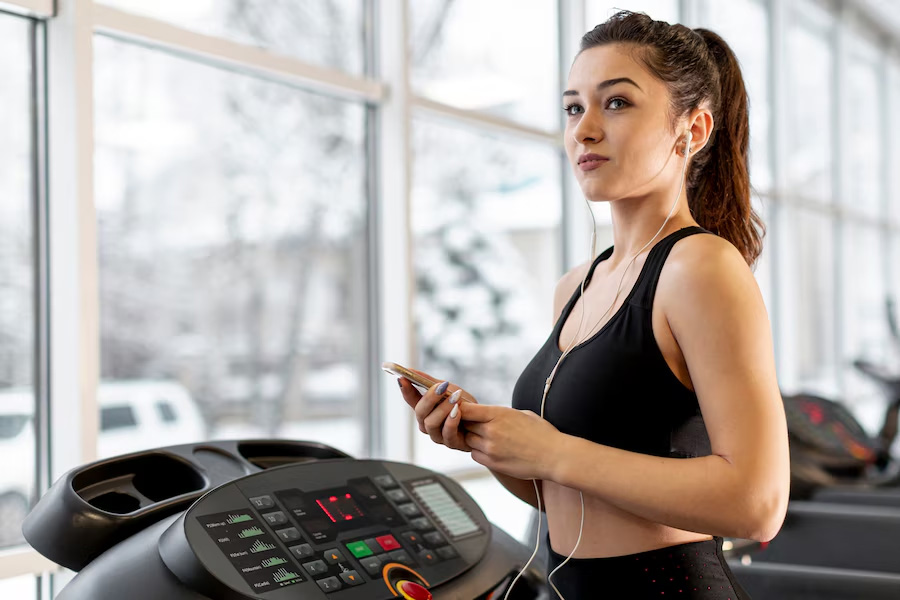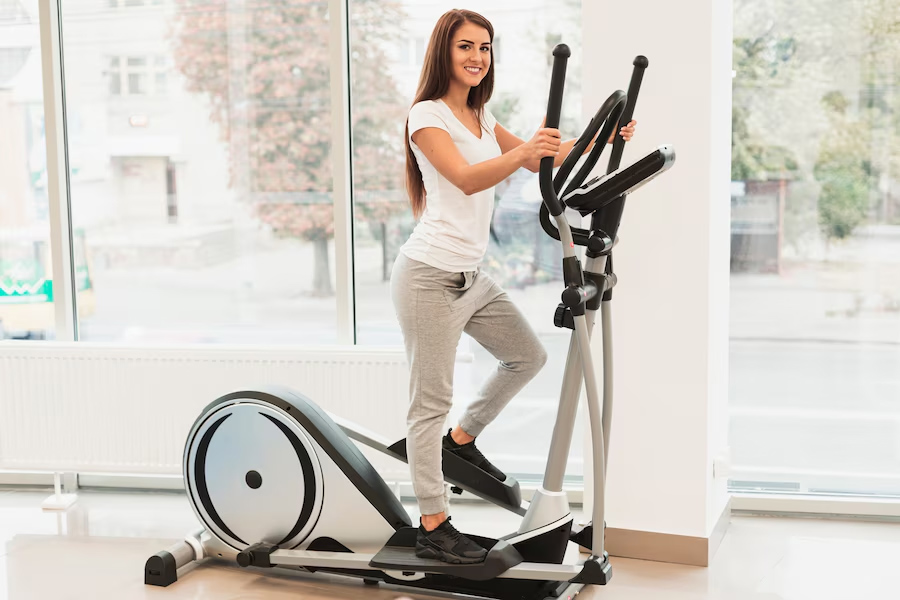
When it comes to cardiovascular exercise, two of the most popular machines in gyms and homes are treadmills and ellipticals. Both offer unique benefits, but which is better suited to help you achieve your fitness goals? We spoke to our expert Ishaan Arora, Karnal-based Body Building India Certified Fitness Trainer, who explained the key differences between treadmills and ellipticals, and how each can support different fitness objectives.
Table of Content:-
Treadmills: An Ideal Choice for Cardio and Endurance Training

“Treadmills have long been a staple in fitness routines, primarily because they mimic the natural motion of walking, jogging, or running. This makes them a familiar choice for people at various fitness levels,” said Arora. A treadmill offers a variety of speeds and incline options to challenge your endurance and cardiovascular capacity, whether walking at a moderate pace or training for a marathon.
Benefits of Treadmills
Here are some benefits of treadmills as listed by the expert:

- Versatility: Treadmills allow users to customise their workouts by adjusting speed and incline, making it easier to target specific fitness goals, such as weight loss, endurance, or heart health.
- Calorie Burn: Running on a treadmill tends to burn more calories than using an elliptical, especially when running at higher speeds or on an incline.
- Impact Training: For those preparing for outdoor activities like running events, treadmills can simulate the impact on joints that you would experience while running outdoors. This prepares your body for real-life terrain challenges.
- Bone Strength: Running is a weight-bearing exercise that helps to strengthen bones and reduce the risk of osteoporosis over time.
Also Read: Which Is Better For Fitness, Walking On Treadmill Or Walking Outside?
Drawbacks of Treadmills
While treadmills are great for high-intensity workouts and calorie burning, they do have some downsides:
- Joint Impact: Running or even fast walking on a treadmill can put stress on your knees, ankles, and hips. If you have joint issues, this impact can lead to discomfort or injury over time.
- Monotony: Some people find treadmill workouts repetitive and less engaging than other forms of exercise.
Ellipticals: A Low-Impact, Full-Body Workout

"Elliptical machines offer a low-impact alternative to running, making them ideal for individuals with joint pain or those recovering from an injury. Ellipticals engage both the upper and lower body, as most models include moving handles that simulate a cross-country skiing motion," said Arora.
Benefits of Ellipticals

- Low-Impact Exercise: The smooth and gliding motion of the elliptical minimises the stress on your joints, making it a safer option for people with knee or hip problems.
- Full-Body Engagement: Unlike treadmills, ellipticals work your arms and core in addition to your legs. This makes it an excellent choice for those who want a more balanced workout.
- Improved Cardiovascular Health: Like treadmills, ellipticals also improve cardiovascular fitness by getting your heart rate up, but with less risk of injury. You can adjust the resistance and incline on most machines to increase the intensity of your workout.
- Muscle Endurance: The resistance feature on an elliptical helps to build lower body strength, particularly in the quads, hamstrings, and glutes, while also engaging your core and upper body.
Drawbacks of Ellipticals
Though ellipticals offer a range of benefits, they may not be the perfect fit for everyone:
- Lower Calorie Burn: Ellipticals tend to burn fewer calories compared to treadmills, especially if you’re aiming for a high-intensity workout.
- Less Natural Movement: Some people find the motion of an elliptical to be less natural than walking or running, which can make it difficult to sustain longer workouts.
Also Read: Jumping Rope Vs Running: Expert Helps In Choosing The Right Cardio Workout For You
Which Machine Aligns with Your Fitness Goals?
The decision between a treadmill and an elliptical ultimately depends on your fitness goals, physical condition, and preferences.
Weight Loss

If your primary goal is weight loss, both machines can be effective, but treadmills typically offer a higher calorie burn, especially for high-intensity interval training (HIIT) or incline running. "However, if joint pain is a concern, the elliptical might be a better long-term option for sustained cardio without the risk of injury," said Arora.
According to a 2019 study, whether you prefer running on a treadmill or outdoors, regular aerobic exercise like running helps burn calories, contributing to a calorie deficit.
Endurance and Cardiovascular Health
For those looking to build endurance, particularly runners, treadmills are the best option. They allow you to replicate real-world conditions like hill running, which can significantly improve cardiovascular stamina. "On the other hand, ellipticals offer a good cardiovascular workout, especially if you increase the resistance. However, they might not provide the same endurance-building effects as a treadmill," added Arora.
Injury Prevention and Joint Health
Ellipticals win when it comes to protecting your joints. If you’re recovering from an injury or suffer from chronic joint pain, the low-impact nature of the elliptical is a clear advantage.
Strength and Muscle Building
While neither machine will replace a dedicated strength-training regimen, ellipticals engage more muscles overall, including the upper body and core, due to the arm handles. If you want a more balanced, full-body workout, the elliptical may offer better overall toning.
Bottom Line: Choose What Suits You Best
Arora concluded, “Ultimately, both treadmills and ellipticals have their advantages. If you prefer a high-intensity workout that mimics natural movement, a treadmill may be your best option. On the other hand, if you want a full-body, low-impact workout that’s gentle on your joints, the elliptical could be the perfect match.”
[Disclaimer: This article contains information provided by an expert and is for informational purposes only. Hence, we advise you to consult your own professional if you are dealing with any health issues to avoid complications.]
Also watch this video
How we keep this article up to date:
We work with experts and keep a close eye on the latest in health and wellness. Whenever there is a new research or helpful information, we update our articles with accurate and useful advice.
Current Version